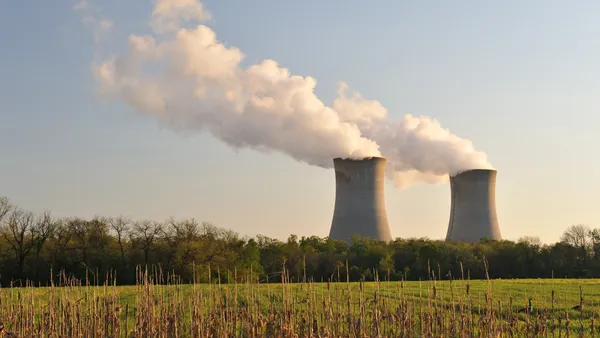Dive Brief:
-
The annual U.S. energy storage market is projected to reach 1.7 GW by 2020 with a value of $2.5 billion, according to a new report by GTM Research and the Energy Storage Association.
-
The report says the U.S. deployed 221 MW of storage in 2015, up 243% from the 65 MW of storage installed in 2014.
-
Storage prices will continue to fall, according to the report, which estimates that costs of energy application projects completed in 2017 will be 29% lower in 2015 prices and, for power application, 25% lower.
Dive Insight:
The U.S. energy storage market put in a strong showing in 2015 with its “best quarter and best year of all time,” according to the GTM/ESA report. And current market trends point toward continued strong growth.
The recent extension of the federal Investment Tax Credit, and new guidelines under consideration at the Internal Revenue Service are expected to further boost energy storage and the pairing of storage with renewable resources.
In the fourth quarter alone, the U.S. deployed 112 MW of storage capacity, representing more than the total of all storage deployments in 2013 and 2014 combined.
For the full year, 221 MW (161 MWh) of storage was installed. In 2014 65 MW (86 MWh) of storage was installed in the U.S.
“We can look back at 2015 as the year when energy storage really took off,” Ravi Manghani, GTM Research senior energy storage analyst and author of the report, said.
The biggest market in 2015 was the utility or front-of-meter market, which accounted for 85% of all deployments. Most of those deployments were in the PJM Interconnection market, where over 160 MW of energy storage systems went online in 2015.
The most dramatic growth, though, was in the residential and non-residential market segments that make up the behind-the-meter market. Though it is smaller, the behind-the-meter market grew 405% in 2015.
The residential market was led by Hawaii for the year. California led the non-residential segment.
And, as policies continue to change, more utilities are considering storage along with an assortment of traditional and non-traditional assets to meet reliability, capacity and system upgrade needs.
“While most of the growth was limited to a single wholesale market of PJM, we expect growing interest for storage in several markets,” Manghani said.
In 2015 20 state markets had energy storage policy activity, up from 10 states in 2014.
GTM research forecasts that the annual U.S. energy storage market will cross the 1-GW mark in 2019, and by 2020 it will be a 1.7-GW market.
“Energy storage is changing the paradigm on how we generate, distribute and use energy,” Matt Roberts, executive director of the Energy Storage Association, said.














